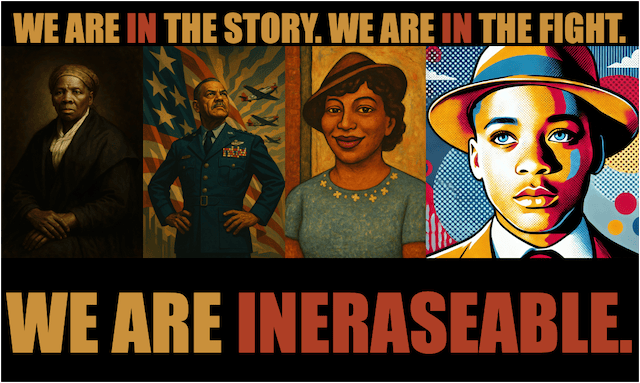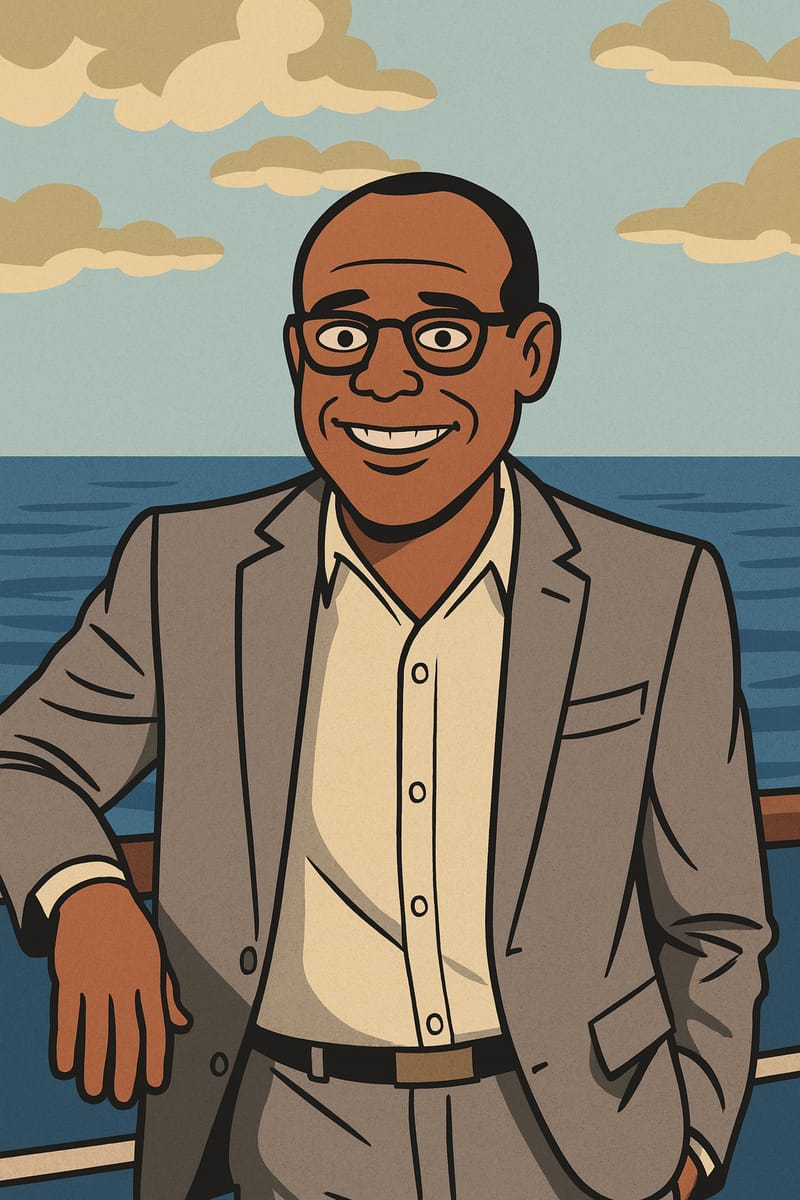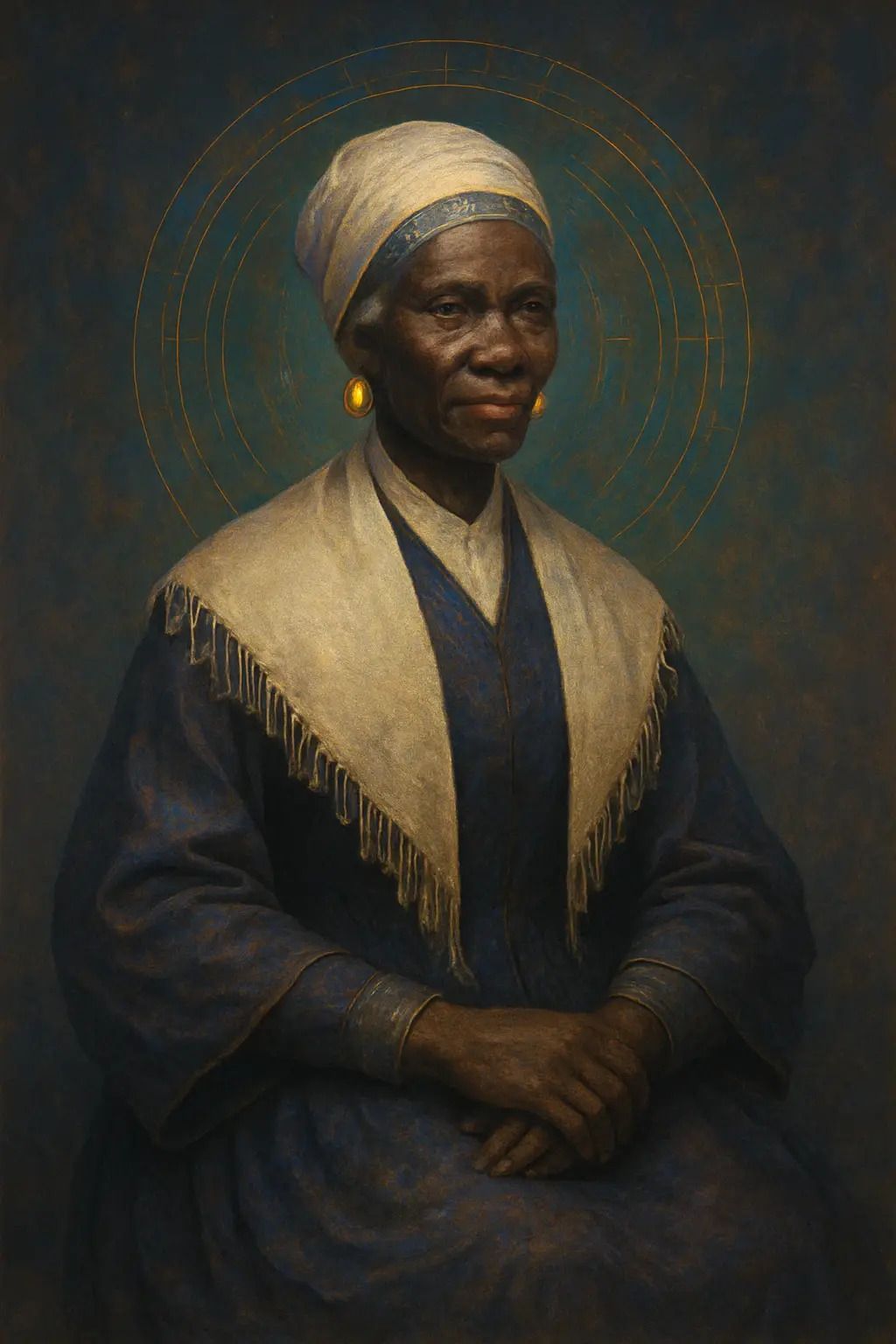The INerasable INsider

Welcome IN…
November arrives with cooler nights, warm meals, and a spirit of gathering — a pause in the year when we reflect on what we’re grateful for. And as I look at what INerasable has become in just a short time, I want to say something simple and heartfelt:
Thank you.
Every story you read, every post you share, every message you send, every time you wear the name INerasable — you are helping build something powerful. You are helping create a space where history is not erased, softened, or overlooked, but remembered, honored, and elevated.
But gratitude — real gratitude — has always held a deeper meaning in history. Our ancestors gave thanks in ways that ran far beyond feasts. Gratitude, for them, was tied to endurance. To liberation. To family restored. To faith that could not be broken.
So in this issue, we look at Thanksgiving not as a myth, but as truth: how freedom reshaped the holiday, how creativity shaped its sounds, how Langston Hughes discussed its meaning, and how Sojourner Truth’s life continues to reshape our courage.
Let’s begin.
INerasable INsight Feature Story
The First Thanksgiving — Gratitude After Emancipation

Thanksgiving often arrives wrapped in cozy images we’ve been taught since childhood. Yet some of the most meaningful Thanksgiving stories in America come from places far beyond the Pilgrim tale.
It’s about newly freed Black people claiming a holiday and turning it into something sacred.
In the first years after the Civil War, Black communities across the South began gathering for their own Thanksgiving celebrations. These weren’t reenactments of colonial folklore. These were celebrations of freedom — of a humanity finally, legally recognized.
Imagine families separated by decades of sale and forced separation now reunited in churchyards and cabins. Imagine former enslaved people dressing in their best clothes, lifting their voices in songs of deliverance and prayers of thanks. Imagine tables set with food cooked joyfully, not under force, and meals shared in homes owned — for the first time — by the people sitting at the table.
There were sermons that blended gratitude with liberation. Testimonies that mixed sorrow with hope. Children born into freedom laughing at tables their grandparents could never have imagined. And throughout it all, a sense that these gatherings were more than meals — they were declarations:
We survived. We are still here. And we will not go back.
Historians now point to these early Black Thanksgivings as some of the first major celebrations of emancipation. They weren’t about the past — they were about possibility.
This month, as Thanksgiving approaches again, we remember those first tables of freedom. Their gratitude wasn’t soft. It was fierce. It was earned. It was INerasable.
IN gratitude. IN survival. INerasable.
IN the Moment
The Sound of Thanksgiving: How Black Bands Changed the Holiday

The PVAMU Marching Storm
Decades before Thanksgiving parades became national spectacles they are today, Black marching bands were already shaping the holiday’s rhythm.
Across towns and cities, HBCU bands electrified local celebrations with high-stepping majorettes, thundering drumlines, and the unmistakable soul that would later define halftime shows and parades.
Their performances didn’t just entertain crowds — they transformed Thanksgiving culture. Many of the musical and choreographic styles now seen in national parades and NFL halftime shows trace directly back to Black marching band traditions.
If Thanksgiving has a beat, HBCU Band’s creativity put the rhythm in it.
IN rhythm. IN spirit. INerasable.
IN Reflection
Langston Hughes’ Thanksgiving
Langston Hughes understood America in ways few writers and poets ever have. He could celebrate beauty without ignoring injustice, and he could hold joy and truth in the same hand. That’s what makes his reflections on Thanksgiving so meaningful.
While many Thanksgiving poems lean into myth and nostalgia, Hughes approached the holiday through a lens of everyday people — the workers, the cooks, the families preparing their tables with care. His images are warm and familiar: cold winds, bright moons, winter on the horizon, pantries filling, spices warming the air.
But beneath the coziness lies something deeper: a reminder that Thanksgiving is a people’s holiday. Not a mythic reenactment, not a sanitized story — but a moment shaped by real homes, real hands, real hope.
Hughes understood that celebration doesn’t have to ignore struggle. It simply has to honor truth.
His poem “Thanksgiving Time” captures that balance — a simple, sensory slice of the season, written with the warmth that made Hughes one of the greatest voices of the Harlem Renaissance.
And in its simplicity, it offers something powerful: a reminder that gratitude is found not in myth, but in the lived, everyday moments that carry us forward.
IN memory. IN gratitude. INerasable.

Thanksgiving Time by Langston Hughes
When the night winds whistle through the trees and blow the crisp brown leaves a-crackling down,
When the autumn moon is big and yellow-orange and round,
When old Jack Frost is sparkling on the ground,
It's Thanksgiving Time!
When the pantry jars are full of mince-meat and the shelves are laden with sweet spices for a cake,
When the butcher man sends up a turkey nice and fat to bake,
When the stores are crammed with everything ingenious cooks can make,
It's Thanksgiving Time!
When the gales of coming winter outside your window howl,
When the air is sharp and cheery so it drives away your scowl,
When one's appetite craves turkey and will have no other fowl,
It's Thanksgiving Time!
IN the spotlight
Sojourner Truth
This month marks the passing of a woman whose very name commands reverence. Sojourner Truth died on November 26, 1883, leaving behind a legacy that looks less like history and more like prophecy.
Born into bondage in New York, she freed herself in 1826 — walking away with her infant daughter and trusting the universe with every step. She went on to win her son back through the courts, making her one of the first Black women in American history to win such a case against a white man.
She spent decades traveling the country, preaching against slavery, advocating for women’s rights, confronting injustice with a clarity that shook rooms. Her 1851 speech — often titled “Ain’t I a Woman?” — remains one of the most powerful, unflinching demands for recognition in American history.
She recruited Black soldiers for the Union Army, visited freedmen’s camps, fought for pensions and land rights, and challenged the nation to reconcile its actions with its ideals.
Sojourner Truth didn’t just tell the truth. She carried it. She lived it. She was it.
This November, we honor her voice — a voice that still cuts through the noise, still lights the way, still refuses to be erased.
IN her voice. IN her vision. INerasable.
IN the near future
As we move into the holiday season, INerasable is growing again. We’ve added new hoodies, hats, long-sleeves, tees, stickers, and “I Am INerasable” apparel for babies and kids — bold pieces to wear, share, and gift.
But what excites me just as much is what’s coming next. Educational workbooks. Posters. New art and new stories. Tools to bring history into classrooms, homes, and communities.
This movement is expanding — and it’s expanding because of you.
Visit WeAreINerasable.com, follow us on our social pages, and keep bringing others into this story.
When we share history together, small things grow into powerful things.
Closing Note
As you gather this Thanksgiving — with family, with friends, with chosen family — may your table be full, your gratitude deep, and your history honored.
Be thankful. Be brave.
Stay IN the story — all season long.
IN Me.
IN You.
INerasable.
“I will not allow my life’s light to be determined by the darkness around me.”

